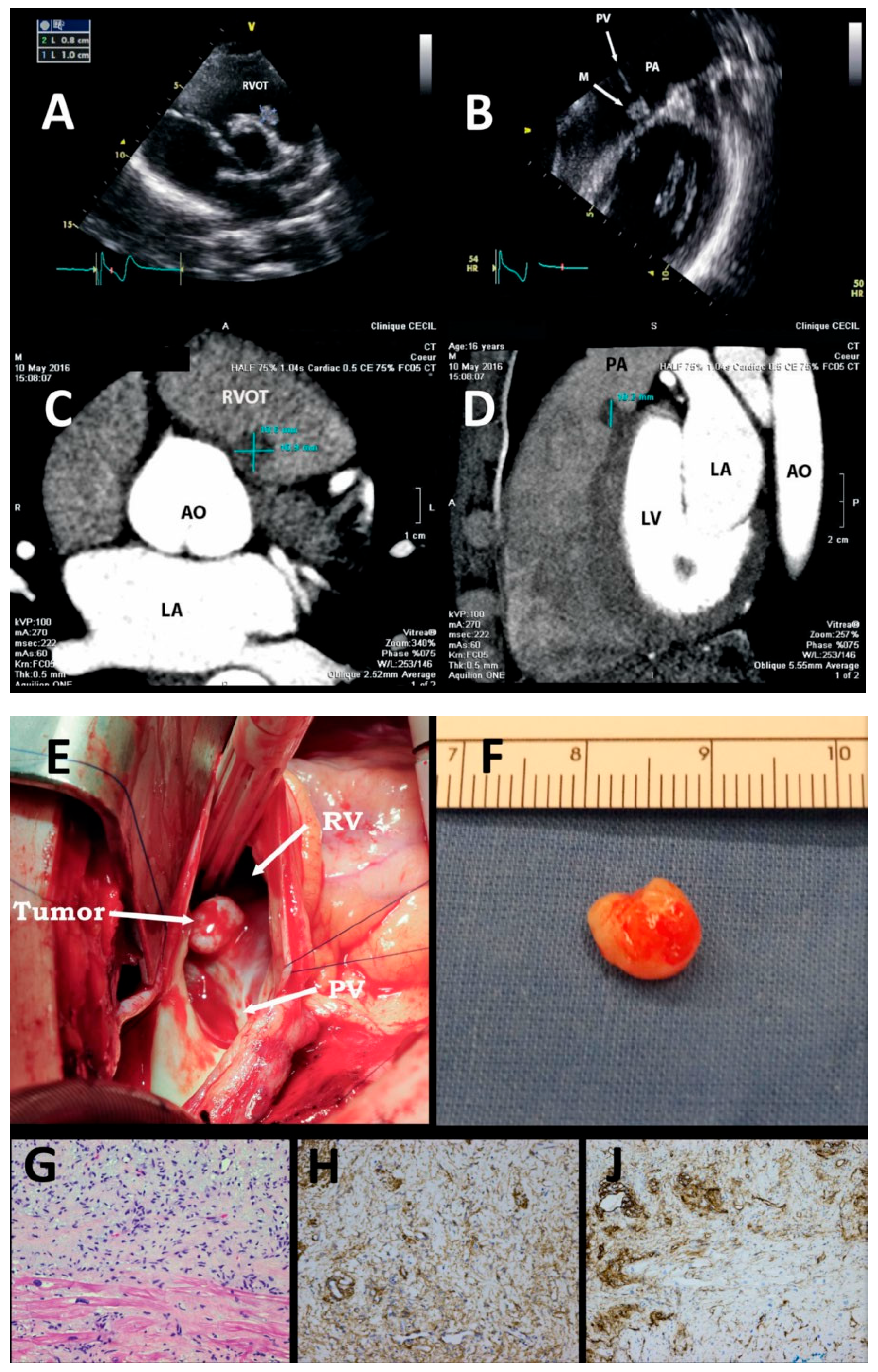Myxoma of the Pulmonary Valve
Conflicts of Interest
References
- Gribaa, R.; Slim, M.; Kortas, C.; Kacem, S.; Ben Salem, H.; Ouali, S.; et al. Right ventricular myxoma obstructing the right ventricular outflow tract: a case report. J Med Case Rep. 2014, 8, 435. [Google Scholar] [CrossRef] [PubMed]
- Rao, P.A.; Nagendra Prakash, S.N.; Vasudev, S.; Girish, M.; Srinivas, A.; Guru Prasad, H.P.; et al. A rare case of right ventricular myxoma causing recurrent stroke. Indian Heart J. 2016, 68, 97–101. [Google Scholar] [CrossRef] [PubMed][Green Version]

© 2017 by the author. Attribution - Non-Commercial - NoDerivatives 4.0.
Share and Cite
Roux, O.; Tinguely, F.; Barras, J.-L.; Prêtre, R.; Goy, J.-J. Myxoma of the Pulmonary Valve. Cardiovasc. Med. 2017, 20, 136. https://doi.org/10.4414/cvm.2017.00474
Roux O, Tinguely F, Barras J-L, Prêtre R, Goy J-J. Myxoma of the Pulmonary Valve. Cardiovascular Medicine. 2017; 20(5):136. https://doi.org/10.4414/cvm.2017.00474
Chicago/Turabian StyleRoux, Olivier, Francine Tinguely, Jean-Luc Barras, René Prêtre, and Jean-Jacques Goy. 2017. "Myxoma of the Pulmonary Valve" Cardiovascular Medicine 20, no. 5: 136. https://doi.org/10.4414/cvm.2017.00474
APA StyleRoux, O., Tinguely, F., Barras, J.-L., Prêtre, R., & Goy, J.-J. (2017). Myxoma of the Pulmonary Valve. Cardiovascular Medicine, 20(5), 136. https://doi.org/10.4414/cvm.2017.00474



